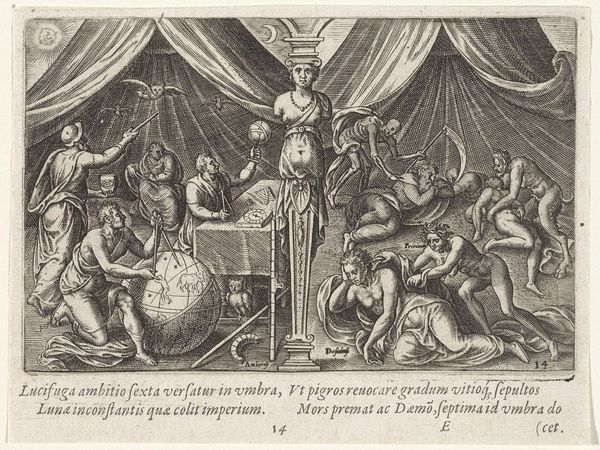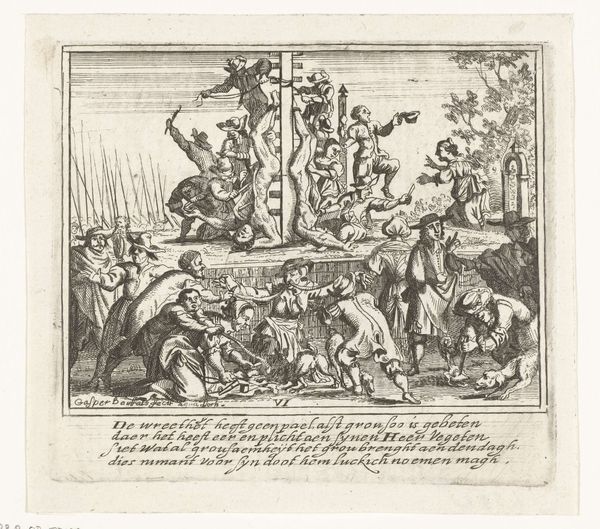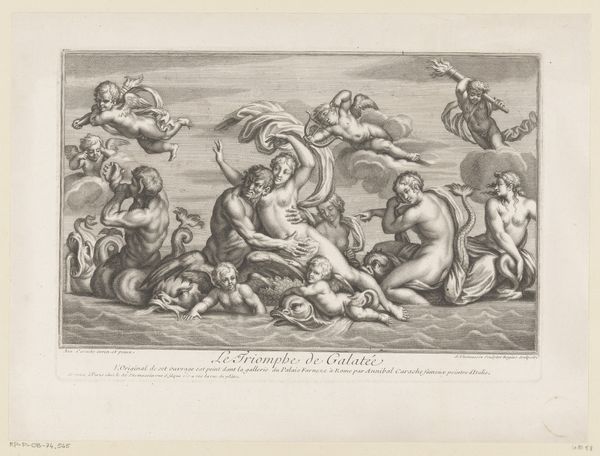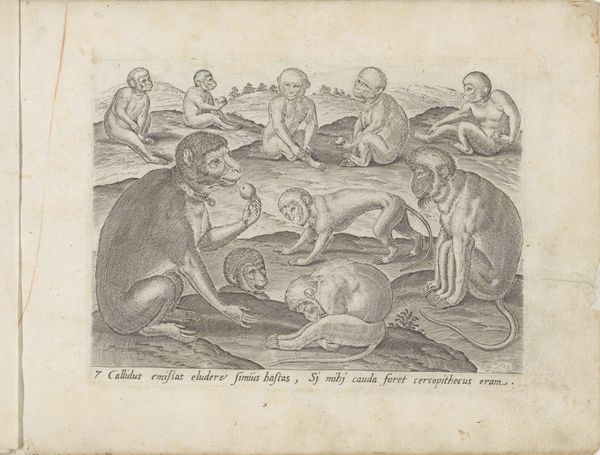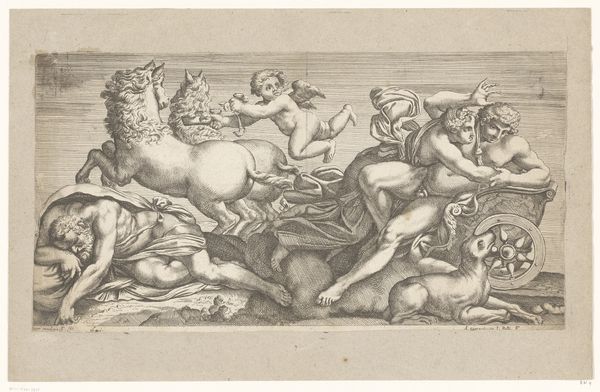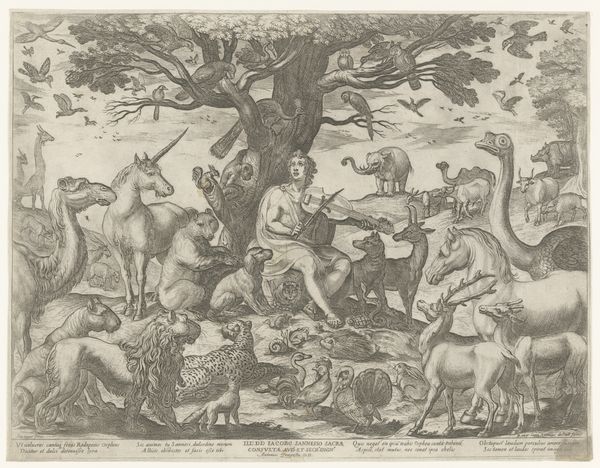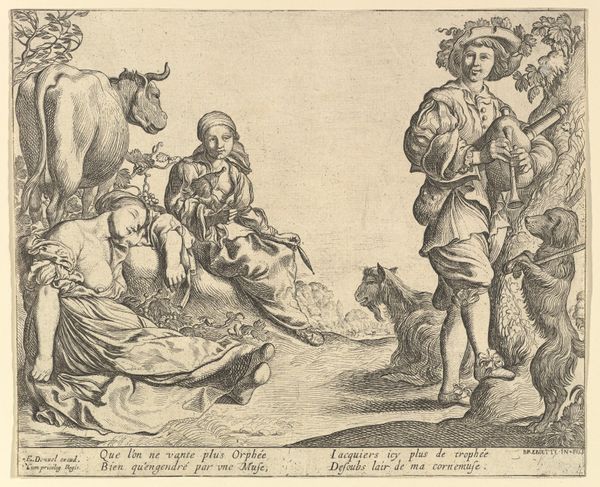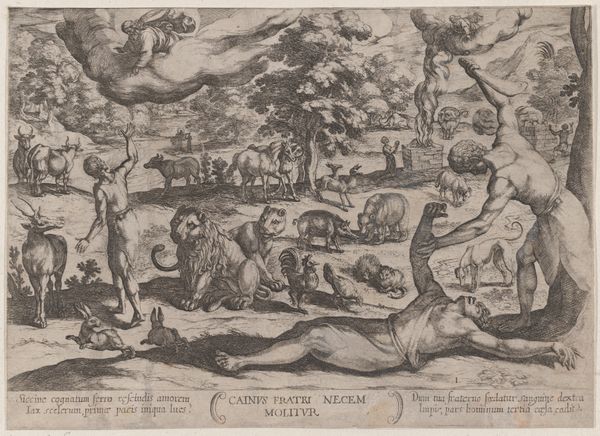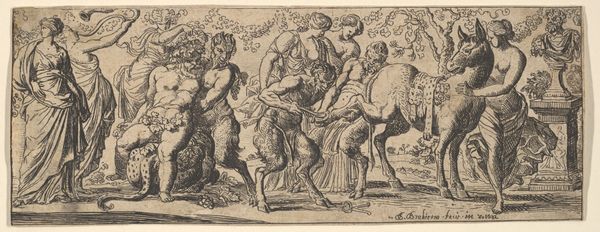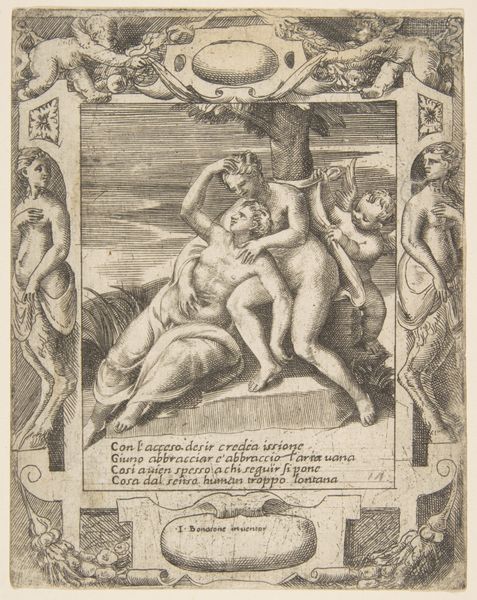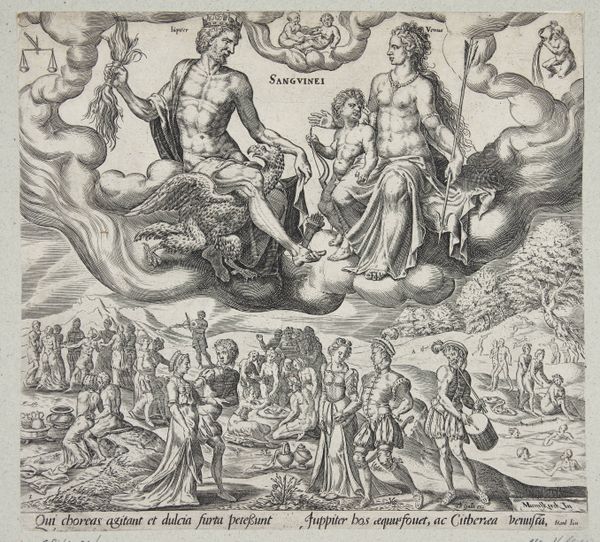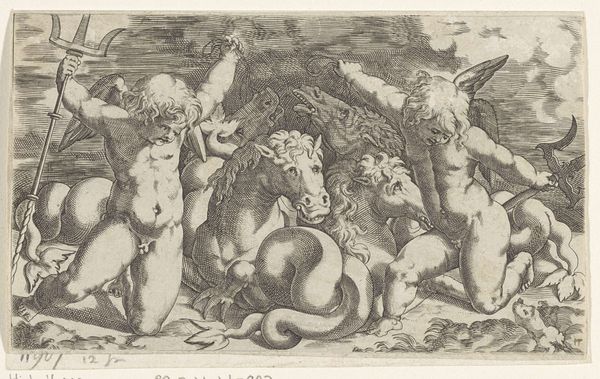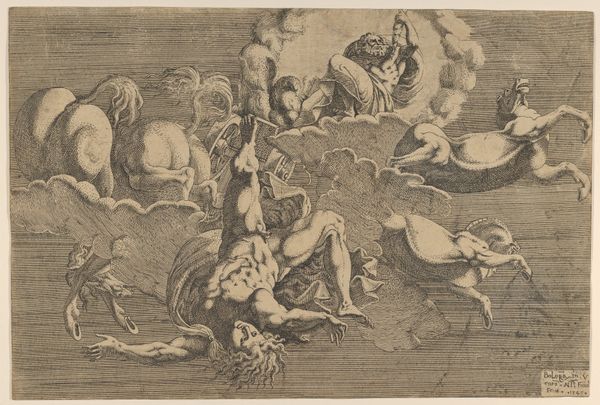
drawing, print, engraving
#
drawing
#
allegory
#
baroque
# print
#
figuration
#
history-painting
#
engraving
Dimensions: Sheet (Trimmed): 4 5/8 × 13 11/16 in. (11.8 × 34.8 cm)
Copyright: Public Domain
Curator: Bernardino Capitelli’s print, "The Rape of Persephone," created between 1628 and 1638, is a stunning example of Baroque allegory. The piece, housed here at The Met, depicts the abduction myth. Editor: It's interesting how contained and ornamental this is, despite its rather violent theme. The dense layering and the stylized figures create this almost frieze-like effect, quite controlled and mannered for such an explosive moment. Curator: Baroque art often employed dramatic subject matter but with an eye toward elegance and the didactic possibilities of the imagery. You can see that tension played out here, can’t you? There’s that striving for grandeur. This particular myth resonated powerfully, the transition from innocence to experience… Editor: Exactly! And this isn't merely the violation of Persephone as an individual. Capitelli is depicting the descent into the underworld and, figuratively, winter; a critical inflection point in ancient, and continuous, seasonal-agricultural life cycles. Hades' capture of Persephone isn't simply an event; it symbolizes fundamental change. Curator: It represents the change, but it also reflects how myths were often molded into didactic, sometimes moralizing narratives, and always, almost inherently, deeply psychological narratives for those engaging with these works. The repetition, the canonization if you will, served specific cultural functions. Editor: Right, and to that point it's worth noting how this image functions publicly as a print. Multiple copies meant broader accessibility. It invited engagement with this visual culture that reflected and shaped understandings of social order, power, and even personal experience across Capitelli’s community. Curator: That distribution surely helped in the continual reformation of Persephone’s role within Western imagination. She became, in some interpretations, a symbolic bride of death but also a powerful goddess of spring’s return. This piece visualizes this story to the audiences of the time. Editor: Reflecting on "The Rape of Persephone," I’m struck again by how images hold layers of significance, shaping both public consciousness and private introspection. Curator: I agree; it provides a great entry point into understanding our collective history through the language of symbolic form.
Comments
No comments
Be the first to comment and join the conversation on the ultimate creative platform.
